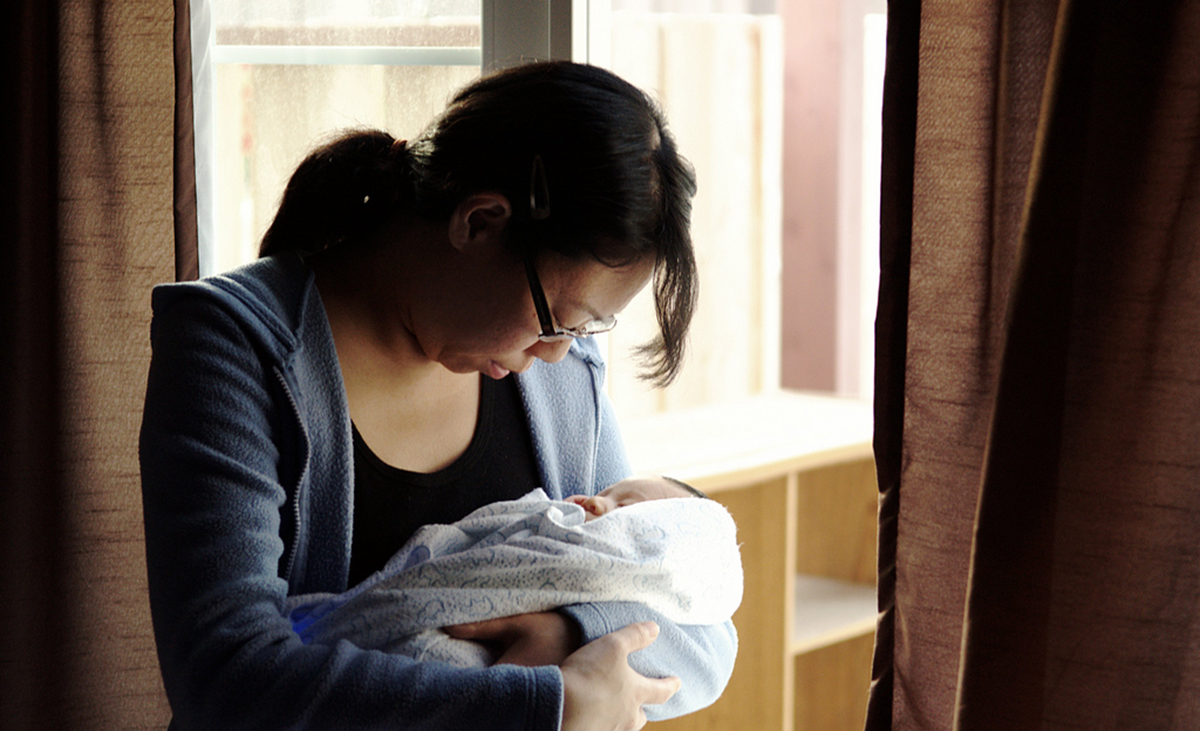Biliary atresia is a rare liver disease affecting newborn infants. Its occurrence is relatively rare (one in every 10,000 children) and the causes remain unknown. Current treatment strategies are only moderately successful at curing the affected child.

What Is Biliary Atresia?
Biliary means "related to bile" whereas "atresia" is a Greek word that means "absence". Biliary atresia is a disease caused by damage to the bile ducts. Bile ducts drain bile, produced by the liver, into the gallbladder and small intestine. Bile helps in emulsifying fats and in cholesterol reabsorption. Damage results in the loss (atresia) of these ducts, causing bile to accumulate in the liver. This build-up may also damage the liver, causing scarring of liver tissue – cirrhosis of the liver. This condition may be irreversible and worsen over the time. After one to two years, the liver may cease to function, resulting in severe liver cirrhosis and the acute need of a liver transplant.
Causes Of Biliary Atresia
Biliary atresia is a rare disease, and affects more newborn girls than boys. It more commonly occurs among Asian and African-American populations as compared to Caucasians. Within a single family, it may affect only one child, or only one in a pair of twins.
The disease can occur because the bile ducts were malformed during pregnancy, or they were damaged by the baby’s immune system because of a viral infection that occurred after birth.
Scientists have, however concluded that biliary atresia is:
- Not hereditary in nature
- Not contagious
- Not preventable
- Not caused by any medication taken during pregnancy
Complications Of Biliary Atresia
Biliary atresia itself may not cause severe harm to the patient. However, after the development of complications, it may become difficult for a child to survive. About 10 to 15 percent of infants diagnosed with biliary atresia are found to have the following complications:
- Heart complications (abnormalities in the inferior vena cava)
- Pre-duodenal portal vein
- Polysplenia (many small accessory spleens)
- Intestinal abnormalities (malrotation, situs inversus)
Biliary Atresia - Common signs and Symptoms
Babies begin exhibiting symptoms of biliary atresia within the first two weeks to two months of birth. Common symptoms are as follows:
- Jaundice
The affected infant appears normal at birth, but develops jaundice within two to three weeks. Jaundice is characterized by yellowing of the skin and the whites of the eyes. It occurs due to the build-up of bilirubin (pigment in bile) in blood. If the jaundice becomes severe, weight loss and irritability may develop as well.
- Alcoholic/Clay-colored Stools
This occurs because bile cannot flow out of the liver into the small intestine, thus unable to remove acidic metabolic compounds from the body. The abdomen may become firm and swollen as well.
- Dark Urine
This also occurs due to the build-up of bilirubin in the blood. The copious amounts filtered by the kidneys and excreted in the urine cause the color of the urine to change.
See Also: Cardiac Conditions In Childhood
Other symptoms include:
- Enlarged spleen
- Foul-smelling and floating stools
- Retarded growth
Biliary Atresia: Diagnosis And Treatment Options
Biliary atresia despite being a rare disease is not hard to diagnose. The initial investigations include:

- Physical Testing – feeling the child’s abdomen to detect an enlarged liver.
- Blood Tests – to check levels of bilirubin (conjugated and unconjugated) which help detect the cause of jaundice as well.
After performing the complete physical examination and blood tests, it is necessary to perform imaging studies to confirm the diagnosis of biliary atresia. These include:
- Cholangiogram – X-ray of the bile ducts.
- Abdominal X-ray – to check for an enlarged spleen or liver.
- Abdominal Ultrasound – to detect size and presence of gallbladder.
There are some special tests that are performed after imaging studies. These tests play an important role in determining the appropriate treatment.
- Hepatobiliary Iminodiacetic Acid (HIDA)/ Cholescintigraphy
This test is done to determine the working capacity of bile ducts and gallbladder. An intravenous injection of a radioactive chemical is given to the child. Under normal conditions, this chemical is filtered from the blood by the liver and is secreted into the bile, going where the bile goes. A camera that detects radioactivity is placed on the child’s abdomen to view the route of the bile (ducts, gallbladder, and intestine). This takes about two hours.
- Liver Biopsy
This test determines the extent of liver damage and cause of jaundice. This is a very reliable procedure; tissue samples are viewed under the microscope to reveal abnormalities.
- Diagnostic Surgery (Operative Cholangiogram)
This surgery is performed to confirm the presence of an injured portion of the bile ducts. A dye is injected via the gallbladder that travels into the bile ducts. This is followed by an X-ray to detect any abnormalities in the path of flow from ducts to the intestine, confirming biliary atresia.
Treatment Options for Biliary Atresia
Medication cannot treat biliary atresia, and the only available treatment is surgery. This involves a hepatoportoenterostomy, more commonly known as the Kasai procedure. This method re-establishes the flow of bile from the ducts into the intestine. The procedure involves:
- Removal of those damaged bile ducts that are outside the liver (extrahepatic ducts).
- Identifying the smaller ducts that are still functional and draining bile.
- Attaching a loop of the intestine to this part of the liver, so facilitate bile flow directly from the healthy ducts to the intestine.
Recovery After Treatment
The success rate of the Kasai procedure is 60-85 percent. Healing usually involves about 10 days. Long-term antibiotic therapy is administered to avoid post-operative infections. Additional medication may be required to promote adequate bile flow and recovery.
Treatment and therapy after surgery aims to enhance normal development and growth of the child. Regular check-ups will be needed. If bile flow seems to be restricted, a low-fat diet, along with vitamin supplements will be given.
The success of the Kasai procedure depends on the following factors:
- Extent of liver cirrhosis
- Size and number of microscopic ducts that are adequately draining bile.
- Age of the child – surgery after 4 months of age is unlikely to help.
See Also: Newborn Screening: What Parents Should Know
Prognosis - Outcome of the Disease
If prompt treatment is not given, children with biliary atresia rarely live beyond the age of two. If the Kasai procedure is successful, the child may be able to live a normal life. However, majority of children, even after surgery, suffer from gradual liver damage and need specific medical care, ultimately needing a liver transplant.
- Photo courtesy of LadyDragonflyCC - >
- < via Flickr: www.flickr.com/photos/ladydragonflyherworld/11847455775
- Photo courtesy of Koadmunkee via Flickr: www.flickr.com/photos/koadmunkee/5528550876
- www.liverfoundation.org/abouttheliver/info/biliaryatresia/
- http://www.cincinnatichildrens.org/health/b/biliary/
- http://www.nlm.nih.gov/medlineplus/ency/article/001145.htm
- http://answers.webmd.com/answers/1199933/what-is-biliary-atresia

